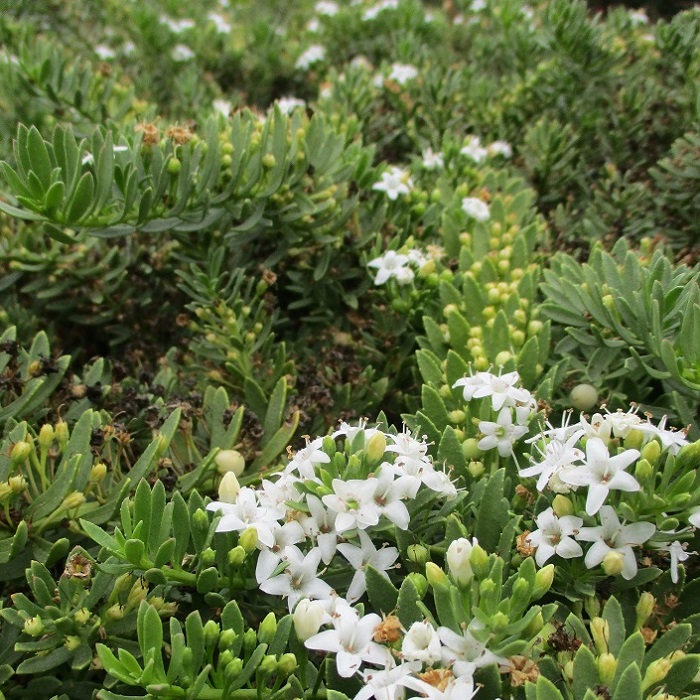UNITED STATES—If shade trees are the ceilings, and hedges and shrubbery are the walls, then turf and other groundcover plants are the floors of some of our outdoor living spaces. Except for turf grasses, most groundcovers are not as useful as hardscapes like pavement and decking, but they perform other functions in areas that do not get such use. Groundcovers inhibit weeds, erosion, dust and mud.
Turf grasses used for lawn are of course the most popular groundcovers, and are a separate topic from other groundcover plants that grow over unused or lightly used ground. Because they need not tolerate traffic, these other groundcover plants need not be as resilient, or as flat as turf grasses are. They can be perennials, vines or low sprawling shrubbery. Most, but not all are evergreen.
Groundcover plants work something like mulch, although most want to be watered. They inhibit weed growth by occupying the space that weeds want. Many hold soil together with their roots. They may seem like they would compete with other plants, but groundcover plants insulate the soil, which makes it more comfortable for other plants. Many retain more moisture than they utilize.
Gazanias and iceplants are two of the most popular perennial groundcovers. They tend to replace their own growth regularly as old stems decompose below new growth that spreads over the top. They therefore do not get very deep. Some gazanias eventually develop bald spots. When they get trimmed around the edges, the scraps can be plugged back into bald spots as cuttings.
Cultivars of myoporum, cotoneaster, ceanothus, rosemary, juniper and other low and sprawling shrubbery that make good groundcover must not be confused with cultivars that grow as upright shrubbery or even trees. There is a big difference between creeping myoporum that stays less than a foot deep, and shrubby myoporum that can get almost 30 feet tall! Also, vines used as groundcover, like ivy and honeysuckle, should be maintained as such, and not allowed to climb trees, shrubbery and other landscape features, like vines naturally want to do.
Highlight: creeping myoporum
The familiar sandalwood, Myoporum laetum, that is such a resilient small tree or big shrub in windy coastal climates, might make the wrong impression for the less familiar creeping myoporum, Myoporum parvifolium. Creeping myporum does not get much more than a foot high unless it climbs over stones or other obstacles, and it might stay less than six inches deep in exposed spots.
The evergreen foliage is dense enough to prevent most weeds from getting through. The tiny and narrow leaves are only about half an inch or an inch long, perhaps a bit longer. Clustered white starry flowers that begin to bloom late in spring continue to bloom through summer. Although tiny, and neither profuse nor remarkably showy, they are a nice accent to the rich green of the foliage.
Creeping myporum prefers full sun and occasional watering. It rots easily if watered too much. Its other weakness is that it does not tolerate traffic well. Creeping myoporum is a low growing shrub with woody stems that can break if trampled on. Individual plants can get 10 feet wide if they get the chance. They are typically planted much closer together so that they cover the ground faster.
Horticulturist Tony Tomeo can be contacted at tonytomeo.com.






